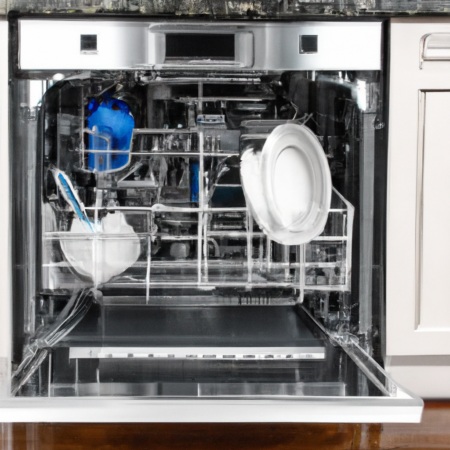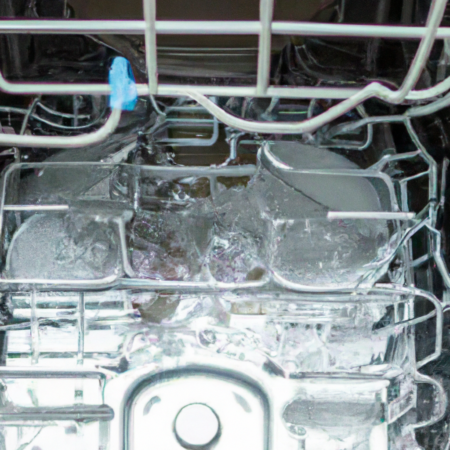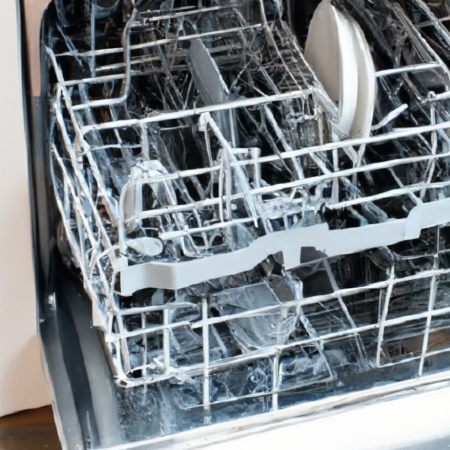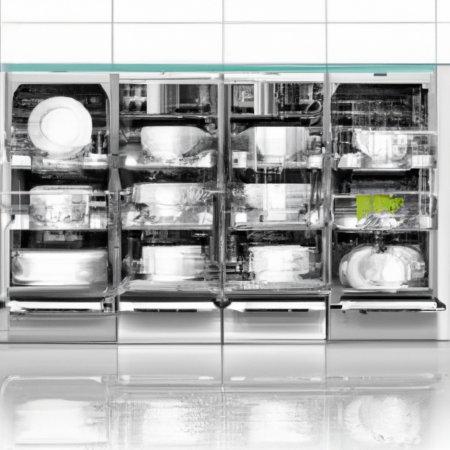Have you ever experienced the frustration of taking your freshly washed dishes out of the dishwasher, only to find them still wet and dripping? It’s not only inconvenient, but it can also lead to streaks or spots on your dishes. So, what could be the cause of this problem? In this article, we will explore some common reasons why dishes may not be drying properly in your dishwasher and provide you with practical solutions. Say goodbye to wet dishes and hello to sparkling clean and dry ones!
Faulty Heating Element
Diagnosing a faulty heating element
If your dishes are not drying properly, one possible cause could be a faulty heating element in your dishwasher. The heating element is responsible for heating the water during the wash cycle and providing the necessary heat for drying during the dry cycle. To diagnose if you have a faulty heating element, you can perform a simple test. Start a new dishwasher cycle and after a few minutes, open the door and touch the heating element. If it is not hot or warm to the touch, then it may be a sign that the heating element is faulty and needs to be replaced.
Common signs of a faulty heating element
In addition to the lack of heat during the drying cycle, there are a few other common signs that may indicate a faulty heating element. If your dishes come out of the dishwasher wet or with water spots even after using the appropriate settings and rinse aid, it could be a sign that the heating element is not functioning properly. Another sign is if you notice a burning smell or see visible damage such as melted or discolored areas on the heating element. If you experience any of these issues, it is likely that you need to replace your faulty heating element.
Replacing a faulty heating element
Replacing a faulty heating element in your dishwasher can help restore proper drying performance. Before beginning, make sure to disconnect the power supply to the dishwasher to ensure your safety. Consult your dishwasher’s manual for instructions specific to your model, but generally, the process involves accessing the heating element inside the dishwasher, disconnecting any electrical connections, and removing the faulty element. Install the new heating element, reattach the electrical connections, and test the dishwasher to ensure it is working properly. If you are unsure about performing this task yourself, it is recommended to seek the assistance of a professional.
Inefficient Dishwasher Design
Understanding dishwasher design flaws
Sometimes, the reason why your dishes are not drying properly is due to inherent design flaws in your dishwasher. Every dishwasher model has its own unique design, and some may be more prone to drying issues than others. One common design flaw is the placement of the heating element. If it is located on the bottom of the dishwasher, the heat may not be evenly distributed throughout the interior, resulting in uneven drying. Another design flaw could be inadequate airflow within the dishwasher, which can impede the drying process. Understanding these design flaws can help you optimize the drying performance of your dishwasher.
Products to optimize dishwasher efficiency
To address the inefficiencies caused by dishwasher design flaws, there are several products available on the market that can help optimize the dishwasher’s efficiency. One such product is a dishwasher fan, which can be installed inside the dishwasher to improve airflow and enhance drying. Another option is dishwasher racks with built-in vents that allow for better air circulation, resulting in more thorough drying. Additionally, utilizing dishwasher-specific drying agents or additives can also aid in improving drying performance. Researching and investing in these products can potentially solve your drying issues.
Alternatives to inefficient dishwashers
If you have tried various solutions and your dishwasher still doesn’t provide satisfactory drying results due to its design flaws, it may be time to consider alternatives to your current dishwasher. Upgrading to a newer model with improved design features, such as redesigned drying systems or better airflow circulation, can significantly enhance drying performance. Additionally, exploring alternative dishwashing methods, such as handwashing or using countertop dish drying racks, can be an effective solution if you prefer to avoid replacing your dishwasher altogether. Evaluate your options and choose the approach that best suits your needs.
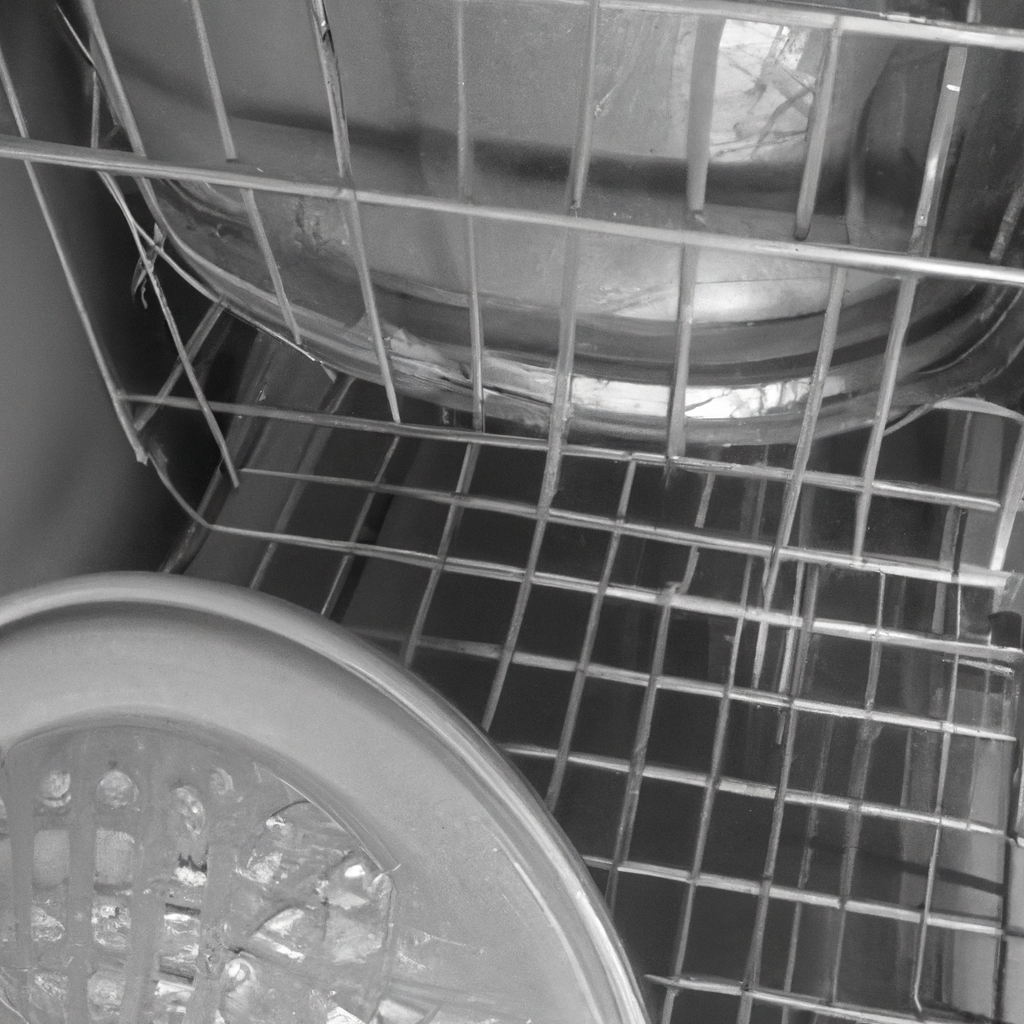
Blocked Vent
Symptoms of a blocked vent
Another possible cause for your dishes not drying properly is a blocked vent in your dishwasher. The vent allows moist air to escape from the dishwasher, facilitating the drying process. If the vent becomes blocked or obstructed, the moist air will be trapped inside the dishwasher, resulting in damp dishes at the end of the cycle. One symptom of a blocked vent is condensation on the dishwasher door or the surrounding cabinets. Additionally, you may notice a musty smell emanating from the dishwasher or an increase in overall humidity in the kitchen.
How to clean a blocked vent
Cleaning a blocked vent is relatively simple and can often resolve the issue of dishes not drying properly. Begin by locating the vent, which is typically located on the top or side of the dishwasher door. Use a soft cloth or sponge to gently wipe away any visible debris or residue that may be causing the blockage. If necessary, remove the vent cover and clean it thoroughly, making sure to remove any accumulated dirt or lint. Once the vent and vent cover are cleaned, replace the cover securely and run a dishwasher cycle to test if the drying performance has improved.
Preventing vent blockages
To prevent vent blockages in the future and ensure proper drying, it is important to maintain a clean and clear vent system. Regularly inspect the vent and clean any visible debris or residue that may accumulate over time. Additionally, be cautious when loading your dishwasher to avoid blocking the vent with oversized items or improperly positioned dishes. By adopting these preventative measures, you can minimize the chances of a blocked vent and continue to enjoy efficiently dried dishes.
Insufficient Rinse Aid
Role of rinse aid in dish drying
Rinse aid is an essential component in achieving properly dried dishes. Its primary role is to reduce the surface tension of water, allowing it to sheet off your dishes easily instead of forming droplets that can lead to water spots. Rinse aid also helps to promote faster drying by aiding in the evaporation of water during the drying cycle. By utilizing rinse aid in your dishwasher, you can significantly improve the drying performance and ensure spot-free, fully dried dishes.
Identifying an insufficient rinse aid issue
If your dishes are not drying properly, it may be due to an insufficient amount of rinse aid being used. One sign of an insufficient rinse aid issue is the presence of water spots or residue on your dishes, even after they have gone through a complete dishwasher cycle. Another indicator is if your dishes feel wet or have a lingering moisture when you remove them from the dishwasher. If you notice these signs, it is likely that you need to address the rinse aid level in your dishwasher.
How to refill rinse aid
To refill the rinse aid in your dishwasher, start by locating the rinse aid compartment, which is typically located near the detergent dispenser. Open the compartment and pour the rinse aid into the designated area, following the manufacturer’s instructions for the appropriate amount. It is important not to overfill the compartment, as this can lead to excessive sudsing or other issues. Once the compartment is filled, securely close it and run a dishwasher cycle to allow the rinse aid to disperse and improve the drying performance. Regularly checking and refilling the rinse aid will help maintain optimal dish drying results.
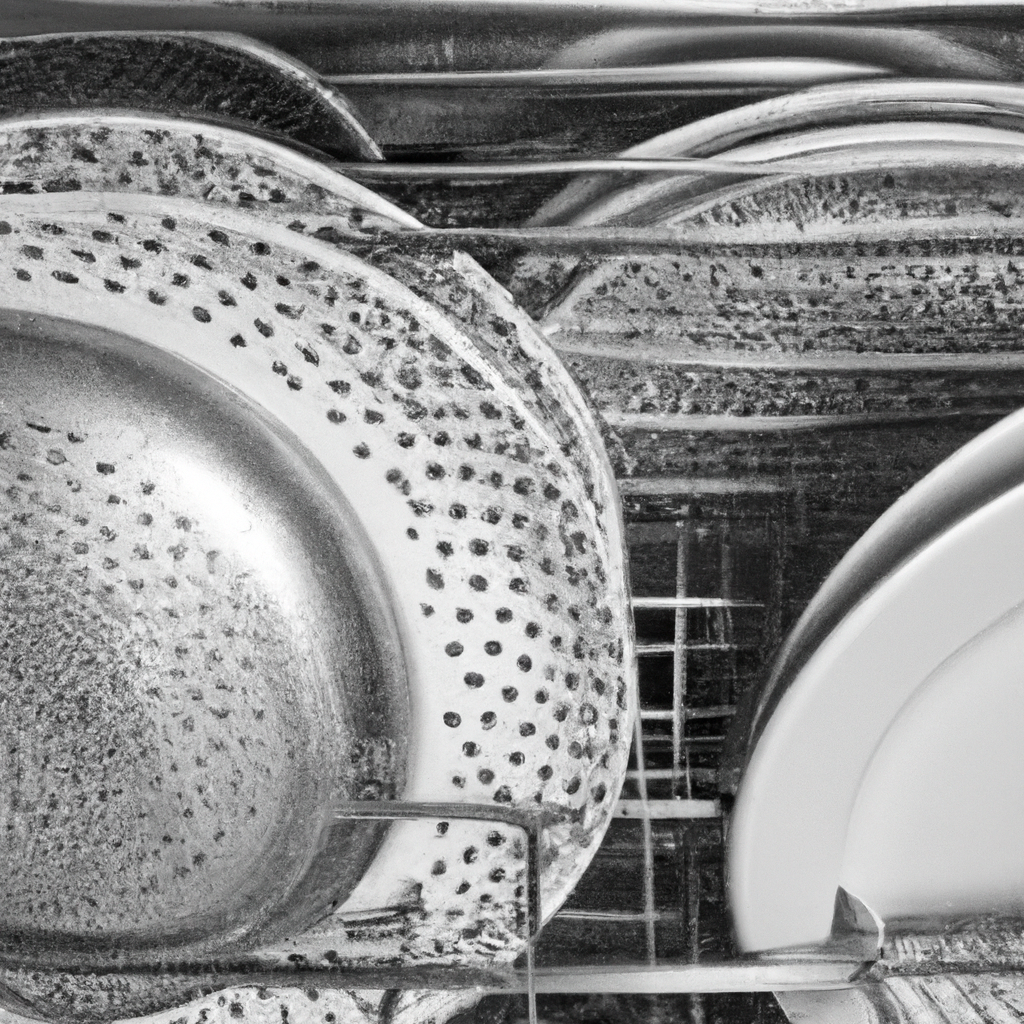
Old or Worn Out Dishwasher
Signs your dishwasher is getting old or worn out
As dishwashers age, they may start to experience efficiency and performance issues, including problems with drying. If you have had your dishwasher for a significant period of time and are noticing a decline in drying performance, it may be a sign that your dishwasher is getting old or worn out. Other signs to watch out for include frequent breakdowns or repairs, increased noise during operation, or a decrease in overall cleaning effectiveness. If multiple components of your dishwasher are showing signs of wear and tear, it may be more cost-effective to replace the dishwasher rather than trying to fix individual issues.
Impacts of an aging dishwasher on drying
An aging dishwasher can have a significant impact on the drying performance of your dishes. Over time, the heating element may become less efficient, resulting in insufficient heat during the drying cycle. Additionally, worn-out insulation or deteriorated seals can cause heat loss, leading to longer drying times or incomplete drying. As your dishwasher ages, parts may begin to wear down, affecting its overall functionality and ability to effectively dry your dishes. Understanding the impacts of an aging dishwasher can help you make an informed decision about whether it’s time to replace your current appliance.
When to replace your dishwasher
Deciding when to replace your dishwasher is a personal choice based on a combination of factors, including the age of your dishwasher, the extent of its wear and tear, and your budget. If your dishwasher is consistently failing to dry dishes properly despite trying various solutions and repairs, it may be time to consider replacing it. Additionally, if your dishwasher is more than ten years old and requiring frequent repairs, it may be more cost-effective to invest in a newer, more energy-efficient model that can provide better drying performance while also reducing water and energy consumption.
Overloading the Dishwasher
Consequences of overloading your dishwasher
Overloading your dishwasher can have negative consequences on its drying performance. When you overcrowd the dishwasher, it restricts the airflow and hampers the proper distribution of heat and moisture throughout the load. As a result, some dishes may not receive sufficient heat or airflow to dry completely, leading to damp or wet items after the cycle. Overloading can also cause dishes to nest or stack together, creating pockets where water can collect and prevent proper drying. To ensure efficient drying, it is important to load your dishwasher correctly and avoid overloading.
Correctly loading your dishwasher
To optimize drying performance and prevent overloading, it is crucial to load your dishwasher correctly. Begin by arranging large items, such as pots, pans, and plates, on the bottom rack, leaving enough space between each item for proper water circulation and heat distribution. Place glasses, cups, and smaller items in the top rack, ensuring they are securely placed in the designated slots or compartments. Avoid blocking the spray arms with tall or oversized items, as this can impede the water and heat from reaching all areas of the dishwasher. By following these loading guidelines, you can improve drying efficiency.
Finding the right balance in dishwasher loading
Finding the right balance in dishwasher loading is key to achieving optimal drying results. Distribute the dishes evenly throughout the dishwasher, avoiding overcrowding any particular area. Utilize the dishwasher’s adjustable racks and tines to accommodate items of various sizes and shapes. It is also important to load items with concave surfaces, such as bowls or cups, at a slight angle to allow water to drain off during the drying cycle. By finding the right balance in dishwasher loading, you can ensure that each dish receives sufficient airflow and heat for effective drying.
Inadequate Dishwasher Settings
Identifying incorrect dishwasher settings
Selecting the incorrect dishwasher settings can lead to inadequate drying results. If your dishes are consistently coming out wet or with water spots, it may be due to choosing the wrong cycle or options on your dishwasher. Some dishwashers offer different drying options, such as air drying or heat drying. If you have inadvertently chosen an air-drying option, it may not provide the necessary heat for effective drying. Additionally, selecting a shorter or energy-saving cycle may not allocate enough time for thorough drying. Understanding the correct settings for your dishwasher is vital for achieving optimal drying performance.
Correct settings for optimal drying
To ensure optimal drying, it is important to choose the correct settings on your dishwasher. Whenever possible, select a cycle that includes a heated drying option, as this will provide the necessary heat to aid in drying. If your dishwasher has an adjustable drying feature, set it to the highest or longest drying time available. Avoid using energy-saving or quick cycles, as these typically prioritize water conservation rather than maximizing drying performance. By selecting the appropriate settings for your dishwasher, you can improve drying efficiency and achieve consistently dry dishes.
Avoiding common dishwasher setting mistakes
To avoid common dishwasher setting mistakes that can hinder drying performance, it is helpful to familiarize yourself with the features and options on your specific dishwasher model. Read the manufacturer’s instructions or consult the dishwasher’s manual to understand the available settings and their intended use. Avoid selecting the wrong cycle or options for your load, such as using a heavy-duty cycle for lightly soiled dishes or accidentally activating an air-dry setting. By paying attention to the settings you choose, you can avoid common mistakes that may compromise the drying performance of your dishwasher.
Detergent Problems
Effects of poor quality or incorrect type of detergent
The type and quality of detergent you use in your dishwasher can significantly impact the effectiveness of the drying process. Using a poor quality detergent or using the wrong type of detergent for your dishwasher can lead to inadequate drying results. Low-quality detergents may not contain the necessary ingredients to break down food particles and residue efficiently, resulting in water spots or a film on your dishes. Additionally, using a detergent formulated for handwashing or other cleaning purposes may not provide the appropriate surfactants and agents necessary for optimal drying performance in a dishwasher.
Choosing the right detergent
Choosing the right detergent for your dishwasher is essential for achieving proper dish drying. Look for detergents specifically formulated for use in automatic dishwashers, as these are designed to provide optimal cleaning and drying performance. Consider opting for detergents that offer additional drying agents or features, such as rinse aid or glass protection. Read customer reviews or seek recommendations from trusted sources to identify high-quality detergents known for their drying capabilities. By selecting the right detergent, you can enhance the drying performance of your dishwasher and ensure spot-free, dry dishes.
Detergent usage tips for optimal drying
To optimize the drying performance of your dishwasher, it is important to follow a few detergent usage tips. Begin by using the appropriate amount of detergent as recommended by the manufacturer. Using too little detergent can lead to ineffective cleaning and drying, while using too much can cause excessive sudsing and residue. Avoid pre-rinsing your dishes excessively, as this can reduce the effectiveness of the detergent in breaking down food particles. Additionally, consider using detergent pods or tablets, as these are pre-measured and designed to dissolve at the right time during the dishwasher cycle, ensuring proper cleaning and drying.
Improper Loading of Dishes
The right way to load dishes
Properly loading your dishes is crucial for achieving optimal drying results. To load your dishes correctly, start by scraping off any excess food debris, but avoid fully rinsing the dishes to ensure the detergent can work effectively. Load larger items, such as pots, pans, and plates, on the bottom rack, with the soiled side facing the center of the dishwasher. Place glasses, cups, and smaller items in the top rack, ensuring they are securely positioned in the designated slots or compartments. By spacing out the dishes and avoiding stacking, you allow for proper water circulation and airflow, leading to better drying performance.
Mistakes in loading dishes
There are several common mistakes that can be made when loading dishes, resulting in inadequate drying. One mistake is placing dishes too close together, as this can hinder water and heat from reaching all areas during the cycle. Overlapping or nesting dishes can also create pockets where water can collect, preventing proper drying. Another mistake is blocking the spray arms with large or bulky items, inhibiting the distribution of water and heat. Additionally, improperly positioning concave items or utensils can trap water and inhibit drying. By avoiding these loading mistakes, you can maximize the drying potential of your dishwasher.
Impact of improper loading on drying
Improperly loading your dishwasher can have a significant impact on its drying performance. When dishes are not placed correctly, water may not reach all areas, leaving residue or water spots. Overlapping or nesting dishes create spaces where water can accumulate and linger, prolonging the drying process. Blocking the spray arms prevents the even distribution of water and heat, further contributing to inadequate drying. Additionally, incorrect positioning of concave dishes or utensils traps water, preventing it from evaporating efficiently. By understanding the impact of improper loading, you can optimize your dishwasher’s drying capabilities.
Room Temperature and Humidity
Impact of high humidity on dish drying
The room temperature and humidity levels can greatly influence the drying performance of your dishwasher. High humidity in the kitchen can hinder the evaporation of water from your dishes during the cycle, leading to damp or wet items at the end. Excess moisture in the air creates a more humid environment within the dishwasher, reducing the drying efficiency. To mitigate the effects of high humidity, it is beneficial to maintain good ventilation in the kitchen to allow damp air to escape. Consider running a dehumidifier or using exhaust fans while your dishwasher is in operation to help improve drying results.
Effect of room temperature
Room temperature can also affect the drying process in your dishwasher. A lower room temperature can result in cooler air inside the dishwasher, prolonging the drying time. Dishes may feel excessively cool or even cold to the touch when removed from the dishwasher. It is important to note that dishwasher drying cycles are optimized for average room temperatures. If you are operating your dishwasher in a significantly cooler environment, it is advisable to select a longer drying cycle or utilize additional drying options, such as heated drying, to compensate for the lower room temperature and ensure thorough drying.
Mitigating humidity and temperature effects on drying
To mitigate the effects of high humidity and lower room temperature on dish drying, there are a few steps you can take. As mentioned earlier, ensuring proper ventilation in the kitchen is crucial. Open windows or doors, use exhaust fans, or run a dehumidifier to reduce excess moisture in the air. If you are experiencing consistently lower room temperatures, consider raising the temperature in the kitchen slightly or using additional heating sources, such as under-cabinet heaters, to create a more favorable environment for drying. By managing humidity and temperature, you can enhance the effectiveness of the drying process in your dishwasher.
In conclusion, there are various factors that can contribute to dishes not drying properly in your dishwasher. From faulty heating elements to inefficient dishwasher design, blocked vents, insufficient rinse aid, old or worn-out dishwashers, overloading, inadequate dishwasher settings, detergent problems, improper loading, and room temperature and humidity, each aspect plays a role in the drying performance. By understanding these potential causes and implementing the appropriate solutions, you can overcome drying challenges and ensure consistently dry, spot-free dishes after every dishwasher cycle. Remember to diagnose and address each issue separately, and if needed, consult a professional for assistance or consider upgrading to a more efficient dishwasher model. With proper care and maintenance, you can enjoy the convenience of a dishwasher with optimal drying results.


